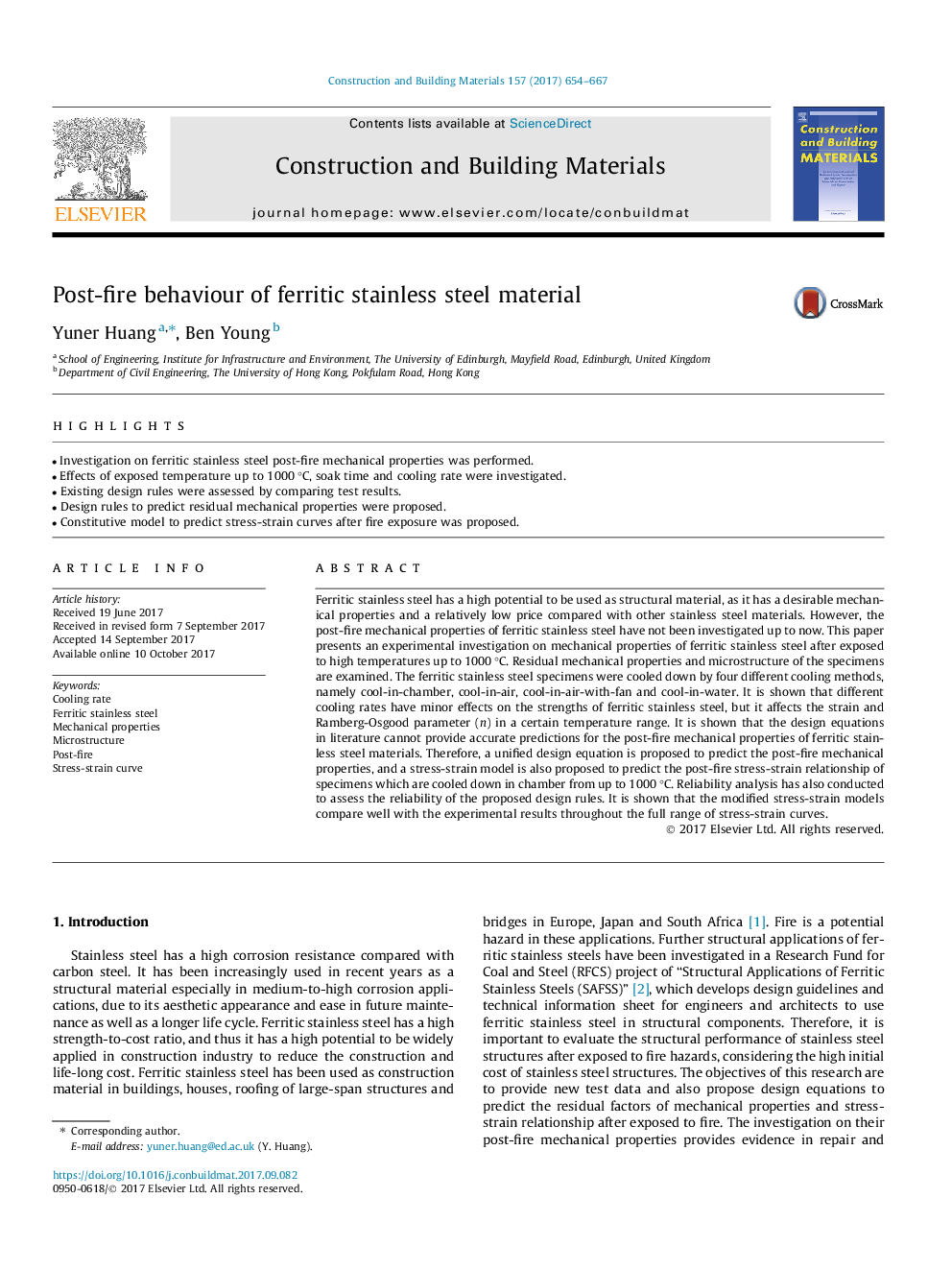| کد مقاله | کد نشریه | سال انتشار | مقاله انگلیسی | نسخه تمام متن |
|---|---|---|---|---|
| 4912905 | 1428749 | 2017 | 14 صفحه PDF | دانلود رایگان |

- Investigation on ferritic stainless steel post-fire mechanical properties was performed.
- Effects of exposed temperature up to 1000 °C, soak time and cooling rate were investigated.
- Existing design rules were assessed by comparing test results.
- Design rules to predict residual mechanical properties were proposed.
- Constitutive model to predict stress-strain curves after fire exposure was proposed.
Ferritic stainless steel has a high potential to be used as structural material, as it has a desirable mechanical properties and a relatively low price compared with other stainless steel materials. However, the post-fire mechanical properties of ferritic stainless steel have not been investigated up to now. This paper presents an experimental investigation on mechanical properties of ferritic stainless steel after exposed to high temperatures up to 1000 °C. Residual mechanical properties and microstructure of the specimens are examined. The ferritic stainless steel specimens were cooled down by four different cooling methods, namely cool-in-chamber, cool-in-air, cool-in-air-with-fan and cool-in-water. It is shown that different cooling rates have minor effects on the strengths of ferritic stainless steel, but it affects the strain and Ramberg-Osgood parameter (n) in a certain temperature range. It is shown that the design equations in literature cannot provide accurate predictions for the post-fire mechanical properties of ferritic stainless steel materials. Therefore, a unified design equation is proposed to predict the post-fire mechanical properties, and a stress-strain model is also proposed to predict the post-fire stress-strain relationship of specimens which are cooled down in chamber from up to 1000 °C. Reliability analysis has also conducted to assess the reliability of the proposed design rules. It is shown that the modified stress-strain models compare well with the experimental results throughout the full range of stress-strain curves.
Journal: Construction and Building Materials - Volume 157, 30 December 2017, Pages 654-667